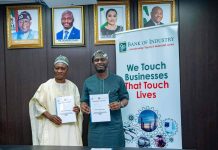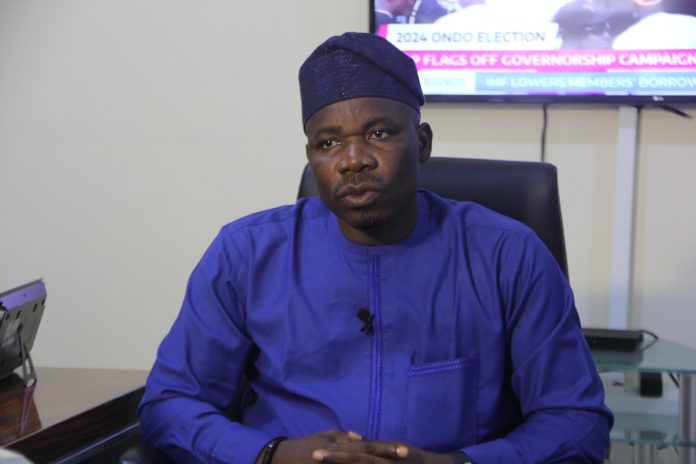
In an era where sustainable transportation and local industrial growth are at the forefront of national discussions, Mr. Joseph Oluwemimo Osanipin, the Director General/CEO of the National Automotive Design and Development Council (NADDC), stands as a visionary leader guiding Nigeria’s automotive sector into the future. With a robust background in finance, internal audit, and leadership in both public and private sectors, Osanipin brings a wealth of expertise to his role. His appointment to NADDC marks a pivotal moment for the nation’s automotive industry, particularly as Nigeria strives to embrace electric vehicles (EVs), compressed natural gas (CNG), and local manufacturing capabilities. Since taking the helm of NADDC exactly one year ago, Osanipin has prioritized enhancing local content in vehicle production, fostering an eco-friendly automotive ecosystem, and ensuring that Nigeria is well-positioned to lead in the adoption of new energy vehicles. His efforts to collaborate with global auto tech experts, improve after-sales services, and support local assembly plants are creating a robust foundation for Nigeria’s transition from semi-knocked down (SKD) to completely knocked down (CKD) production. In this exclusive interview with our Managing Editor, Barr. Eni Christiana Ukpai, Mr. Osanipin shares his strategic vision and discusses the challenges, progress, and exciting initiatives that will shape the future of mobility in Nigeria.
When you took over as the DG/CEO of NADDC, you outlined your plans and agenda for your tenure. Could you please walk us through that agenda?
“When I assumed office, the first priority was to focus on enhancing local components in vehicle production. Our goal is to develop and increase local content in the automotive industry. For instance, in the production of a standard internal combustion engine (ICE) vehicle, numerous parts are involved. So, we began by identifying the components that can be manufactured locally in Nigeria, not just for vehicle production but also for the after-sales market. These after-sales components include consumables like brake pads, oil filters, fuel filters, spark plugs—parts that are frequently replaced in vehicles. We also looked into the production of plastic parts, which are essential. Secondly, we revisited the National Automotive Industry Development Plan (NAIDP) policy passed in May 2023. Our objective was to assess if certain elements needed adjustments and to ensure that they are enacted into law as part of our regulatory framework. We also aimed to engage with local vehicle assemblers to understand their challenges and relay those issues to the relevant authorities. This was a critical step in improving the overall automotive ecosystem in Nigeria. Another key focus was raising awareness of the National Automotive Design and Development Council’s (NADDC) role. Many people were unaware of NADDC’s functions and services. It became important to ensure that the public and industry stakeholders knew where to go when they needed NADDC’s support or services. Alongside this, we concentrated on staff welfare and development, recognizing the importance of enhancing their skills and knowledge base. All these initiatives formed the core of our strategy when we took office.”
You made mention of the National Automotive Industry Development Plan, NAIDP. In what ways has the approval of NAIDP enhanced the local production of made-in-Nigeria vehicles? And how has it contributed to achieving your goal of having 30% of electric vehicles produced locally?
Absolutely. The NAIDP is designed around several foundational pillars aimed at making the objectives of the policy attainable. One of the major pillars is local content development—encouraging the production of automotive components locally. Another crucial pillar is technology adaptation and standardization, ensuring that we not only adopt new technologies but also thoroughly test and set standards for them. The policy clearly outlines what needs to be done to stimulate growth, including market promotion and the provision of incentives for investors. These incentives could be fiscal or non-fiscal, and the policy highlights them to make Nigeria an attractive investment destination, particularly in the automotive sector. For instance, one challenge the policy addresses is the dominance of the used vehicle market. At present, nearly 99% of the major Original Equipment Manufacturers (OEMs) like Toyota, Honda, Mercedes, and Ford are heavily focused on used vehicles in Nigeria. This poses a significant challenge because when a market is dominated by used vehicles, it’s difficult for the local automotive sector to grow. The NAIDP outlines a plan to address this issue, which will help facilitate the growth of the local industry. When we engage with OEMs, they express confidence in the steps Nigeria is taking, particularly when they see that we are working to pass elements of the NAIDP into law. This legal backing reassures investors that Nigeria is serious about fostering growth in the sector. Alongside this, the policy also provides fiscal measures to encourage local production and vehicle assembly while promoting technology transfer. There’s also a strong emphasis on training, particularly to equip our workforce with the skills needed to adopt and apply new technologies. The clarity and structure provided by the NAIDP have undoubtedly increased confidence among top global OEMs. When you consider the comprehensive approach—covering investment promotion, market development, technology, human resources, and standardization—investors see that we have a well-thought-out plan. Over the past few months, we’ve witnessed increasing interest from key stakeholders. For example, the Association of African Auto Manufacturers (AAAM) has visited Nigeria multiple times this year to assess our progress with the NAIDP. They are encouraged by what they see and are now actively exploring opportunities to participate more fully in our industry. Their visits and ongoing discussions about potential adjustments and areas for collaboration are highly motivating for us. The more progress we make, the more interest we generate from these key players, and they’ve begun outlining specific areas where they want to get involved. So, we’re confident that Nigeria is on the right path. As we continue to implement the NAIDP, we expect to see even more robust participation from global automotive manufacturers.
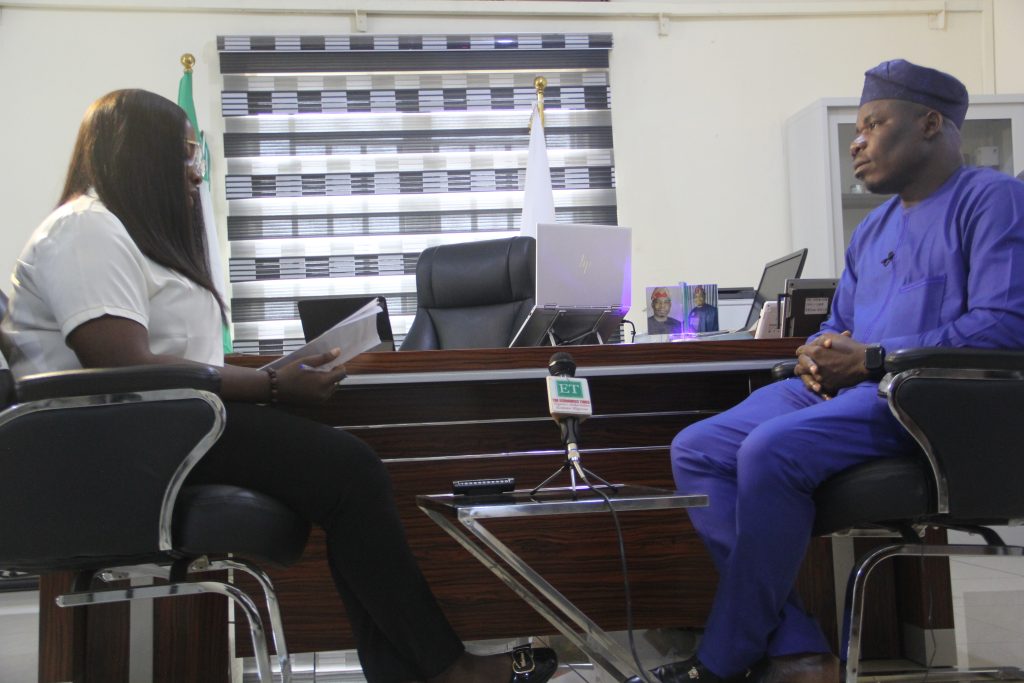
How many auto assembly plants are currently operational in the country?
Yes, we’ve licensed about 32 companies to produce automobiles, but out of those, only 18 or 19 are actively assembling in Nigeria. However, our primary concern isn’t just the number of companies assembling vehicles—it’s the volume they’re producing that matters most to us. In the automotive industry, volume is crucial. Even if we only had two companies, but they were assembling 500,000 vehicles each, that would be far more beneficial than having 100 companies producing just 1,500 units per month. This is because the auto industry thrives on high production volumes, which help drive down costs. When you’re producing at low volumes—10,000 or even 50,000 units—it becomes difficult to compete globally, especially on pricing, which is a key factor in this industry. So, our focus is on encouraging these companies to increase their production volumes, to grow and expand, because that’s how we’ll strengthen the local industry and make it competitive on a global scale.
Do you foresee any collaborations with international manufacturers or auto companies to establish more plants in Nigeria? And what role can the private sector play in this expansion?
Yes, we definitely foresee that happening. As I mentioned earlier, we’ve had several discussions with the Association of African Auto Manufacturers (AAAM), which includes major global players like Toyota, Honda, Volkswagen, and Nissan. They’ve shown significant interest in establishing production in Nigeria. We’re actively addressing some of the challenges and requirements they’ve raised, especially concerning the broader automotive industry in Nigeria. These issues are currently under review, and we’re taking steps—one at a time—to align with what other countries are doing to attract these major manufacturers. The passage of the National Automotive Industry Development Plan (NAIDP) has already boosted their confidence, but they’re looking for a few additional assurances to solidify their decision to invest. When a company is considering an investment worth millions of dollars, they need certainty that their investment is secure, and that’s exactly what we’re working on.
I commend your administration for the excellent work in establishing accredited centers for converting fuel-powered vehicles to compressed natural gas, CNG vehicles. How many certified conversion centers and gas stations are currently operational?
Currently, we have around 70 workshops operating across the country, with some companies running multiple centers. For instance, a company might have two workshops in Abuja and another two in Lagos. These 70-plus workshops are in addition to the assembly plants, which also function as automatic conversion centers. In fact, we already have about 32 assembly plants serving as conversion centers even before we began expanding this initiative. When you combine the workshops and assembly plants, we have close to 100 conversion centers spread across Nigeria. However, we know this number won’t be sufficient for our long-term goals. That’s why we’re taking steps to ensure that our training centers also serve as conversion centers. This way, trainees who have learned how to carry out conversions but may not have the equipment or resources to set up their own facilities can work from our training centers. These centers are fully equipped to handle much more than what’s required for conversions, and we’ve made them accessible to support these individuals.
With the rise of the CNG conversion centers, how is NADDC ensuring that the workers in these centers are adequately trained and certified?
When we accredit workshops, we focus on two main factors. First, we look at the personnel. The workshop must have the right people with the skills to handle various tasks. This includes mechanical work, such as drilling, welding, and constructing the base for the cylinder. We also need personnel who can handle electrical work, as well as those with expertise in the digital aspect, like calibration and software updates. The second key factor is the equipment. Even if a workshop has skilled personnel, without the right equipment, they won’t be able to perform their tasks effectively. Similarly, having the equipment without knowledgeable staff will also prevent them from achieving their goals. So, when we conduct accreditation, we ensure that both the personnel and the equipment are up to standard. Once a workshop meets these requirements, we proceed with accreditation.
How effective is the conversion of a fuel-powered vehicle to a CNG-powered vehicle in terms of the cost implications?
The cost efficiency is significantly better than it might seem at first glance. If you focus only on the cost of conversion, you might miss the bigger picture. It’s important to consider both the conversion cost and the savings you’ll make after the conversion. Take a typical transporter traveling from Abuja to Ado, a journey of about 244 kilometers. If they make that trip daily, possibly doing six trips in total, depending on the type of vehicle, they will quickly recover the cost of conversion. In fact, for a transporter, it typically takes about two to three months to recoup the investment made in conversion. For individuals who use their vehicles less frequently, such as driving to the office, it might take 10 to 12 months to recover the cost. But for heavy-duty vehicles, like haulage trucks or tankers, which transport cement or similar goods, the payback period is even shorter—around two months. So, for transporters, there’s no doubt about the cost-effectiveness of the conversion.
NADDC recently signed a partnership agreement with accredited technicians and workshop owners, just like you mentioned, and also handed over compressed natural gas, CNG buses to Ekiti State Transport Union and other stakeholders. Now this is a commendable initiative, especially given the current economic challenges and the rise in PMS prices. Now can you explain how this will benefit the poor masses and how accessible these services will be to everyone?
Let me first clarify that these vehicles are part of the Presidential CNG Initiative, which Mr. President promised earlier. These vehicles will be distributed across all states in the federation. The initiative is directly from the Presidency, and we are partners in this effort. We collaborate closely with them, particularly in training artisans and individuals responsible for carrying out the conversions, such as those in Ekiti. What is especially heartening is that some of the people we trained have already established their own workshops. Additionally, some of those we trained have even become partners in the Presidential CNG Initiative itself. They’ve gone on to train others who are now working in different states across Nigeria. As for the vehicles, they were handed over through the state government to the National Union of Road Transport Workers (NURTW), with a focus on long-distance trips. For example, the vehicles in Ado are designated for routes such as Ado-Abuja and Ado-Lagos. The key focus here is on cost reduction for transporters. When you look at the cost of maintaining a vehicle and transporting passengers, a large portion of the expense comes from fueling. If we can reduce fuel costs through CNG conversion, it will directly lower overall transport costs. This reduction will benefit commuters by lowering transport fares and will also reduce the cost of moving goods, particularly food items, across the country. Achieving this will have a ripple effect. Lowering transport costs will reduce the cost of food transportation, which will help address inflation, especially food inflation. Since food costs heavily impact the overall inflation rate, reducing transportation costs will lead to a reduction in food prices and, ultimately, a lower inflation rate.
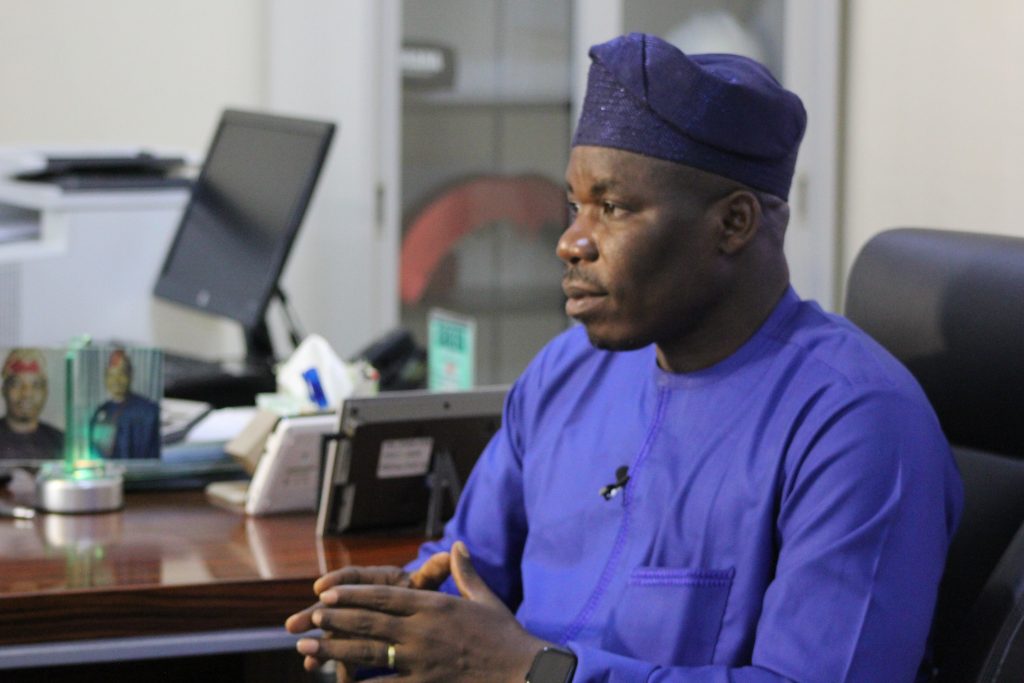
The CNG-powered vehicle initiative is a recent development. Now what about electric vehicles? What are the advantages of electric vehicles over the CNG-powered ones?
Both CNG and electric vehicles (EV) fall under the category of new energy vehicles, and we are actively pursuing both. However, when you have two pathways, one will typically be easier to achieve in the short term. For us, CNG is much easier to implement right now, and developing that sector can also support the growth of EVs. Let me explain. With CNG, you can convert existing vehicles to run on compressed natural gas, meaning the cost of transitioning is primarily tied to the conversion process—which is far more affordable compared to EVs. For EVs, the vehicles need to be built from scratch, which results in a much higher acquisition cost. Given this, it makes sense for us to approach the new energy transition through CNG first. Secondly, Nigeria has an abundance of natural gas, making it a sustainable option. Since we already produce gas alongside crude oil, we can leverage this resource effectively. We even return some of the gas to the soil, so utilizing it through CNG makes economic and environmental sense. That said, we are not neglecting EVs. When we developed our policies, we included both a CNG policy and an EV policy. Recently, we also released the National Occupational Standards (NOS), which will serve as a curriculum to train people in both sectors. This shows that we are preparing for the future of EVs as well. Furthermore, EVs require power for charging stations. As we develop the CNG sector, CNG can serve as a power source for these charging stations. So by focusing on CNG, we’re not just building one system—we’re laying the groundwork for both CNG and EV technologies to grow together.
So what strategy is NADDC adopting to make Electric Vehicle technology more accessible to Nigerian consumers, especially in terms of the charging infrastructure and affordability?
Our first priority is to sensitize the public about electric vehicles (EVs) and improve the knowledge base around them. That’s why we developed the National Occupational Standards (NOS), which provide a structured curriculum to train people in this emerging field. The next key strategy is to establish the necessary infrastructure, particularly charging stations, and we are actively working on this. At the same time, we’re exploring homegrown solutions to address some of the challenges we face. To achieve this, we have partnered with three universities—University of Nigeria, Nsukka (UNN), University of Lagos (UNILAG), and Usmanu Danfodiyo University, Sokoto. These institutions are helping us understand the mechanisms required for building an EV ecosystem. By leveraging their expertise, we hope to use the university system to develop local solutions for EV infrastructure. Additionally, we are conducting research to gather more data on how existing systems work and how we can apply that knowledge to Nigeria’s unique context. This will allow us to develop a more efficient and sustainable approach to EV adoption, just as we’ve done in other sectors like telecommunications.
You mentioned the goal of surpassing one million CNG vehicles in the next three years emphasizing the importance of local content, in these vehicles. considering that one of the biggest challenges in Nigeria is the prevalence of counterfeit and substandard products, What measures are you taking to address this issue?
We tackle this issue right at the source. The first step is identifying the essential components needed for CNG conversion, including the cylinders and other conversion kits, as well as the software required for the process. Each cylinder must come with a universal certification, meaning it is globally certified. Manufacturers also need to be certified by our Standards Organization of Nigeria (SON). Once the conversion is complete, the technician provides a certificate confirming the conversion, which is crucial whenever you want to fill your gas tank. If the gas is not certified, you won’t be able to use it. Regarding the conversion kits, they must be authentic and include compatible software. If a kit is counterfeit, the software won’t function properly. Calibration is critical, and you must use the correct software for the specific product. If the necessary components are not in place, the conversion process cannot be successfully completed. The certificate we provide is essential at the gas station; it must be presented before any gas can be dispensed. Using substandard or uncertified materials renders the conversion invalid. To support these standards and achieve our goal of one million conversions, we are conducting extensive training programs to establish more centers that are accessible to everyone. This makes it easier for individuals to get their vehicles converted. Additionally, the Presidential CNG Initiative is encouraging adoption by offering rebates to transporters, and some even receive conversion kits for free. I believe that once people start experiencing the benefits of CNG, particularly over the next four years, there will be a significant push for wider adoption. Our goal is to reach one million conversions within three years, and I am confident that we will achieve this.
What will the regulatory bodies like SON, Standard Organization of Nigeria, play in curbing the circulation of counterfeit and substandard products in the auto sector?
To begin with, any kits sold in Nigeria must come from manufacturers accredited by the Standards Organization of Nigeria (SON). All kits are required to have certification. In fact, SON has established over 70 standards specifically related to CNG, covering various aspects, including the kits themselves and the conversion process. These standards ensure that workshops comply with safety and quality requirements. Additionally, we are implementing the Nigerian Gas Vehicle Monitoring System, which serves as a comprehensive platform involving multiple agencies. This includes SON, the National Automotive Design and Development Council (NADDC), the Federal Road Safety Corps, and the Nigerian Midstream and Downstream Petroleum Regulatory Authority (NMDPRA), among others. Each agency plays a critical role in monitoring the conversion activities. For instance, SON will oversee the quality of the kits used, while the Road Safety Corps will conduct physical inspections on the roads to ensure compliance. The gas authority will monitor the storage, sale, and dispensing of gas. This collaborative effort through the Nigerian Gas Vehicle Monitoring System will ensure robust oversight of all CNG-related activities in the country.
What does the NADDC’s collaboration with auto tech experts from other countries look like and how far has the agency progressed in terms of capacity building through the use of technology?
We are actively collaborating with other nations because there’s much to learn from those that are more advanced in the automotive industry. For instance, we’ve studied models in China and South Africa, where they have made significant progress. By comparing notes, we’ve identified specific areas for focus. In our discussions, we’ve pinpointed key sectors and are now working to attract investors who are already established in those areas. It’s important to understand that the production of vehicles and parts won’t solely be the responsibility of the National Automotive Design and Development Council (NADDC); rather, we are identifying and collaborating with private sector players who have the expertise and resources. To build capacity within our workforce, we engage in comprehensive training programs. We not only send our personnel for training abroad but also organize local training sessions in collaboration with stakeholders who have practical experience in the field. These stakeholders conduct the training, allowing us to leverage their expertise. Moreover, we have developed the National Occupational Standards (NOS), a structured curriculum that guides the training process. Participants who complete the program receive certificates, similar to the qualifications you would find with National Diploma (ND) and Higher National Diploma (HND) programs. This certification will enhance employability and ensure that our workforce is well-equipped for the industry.
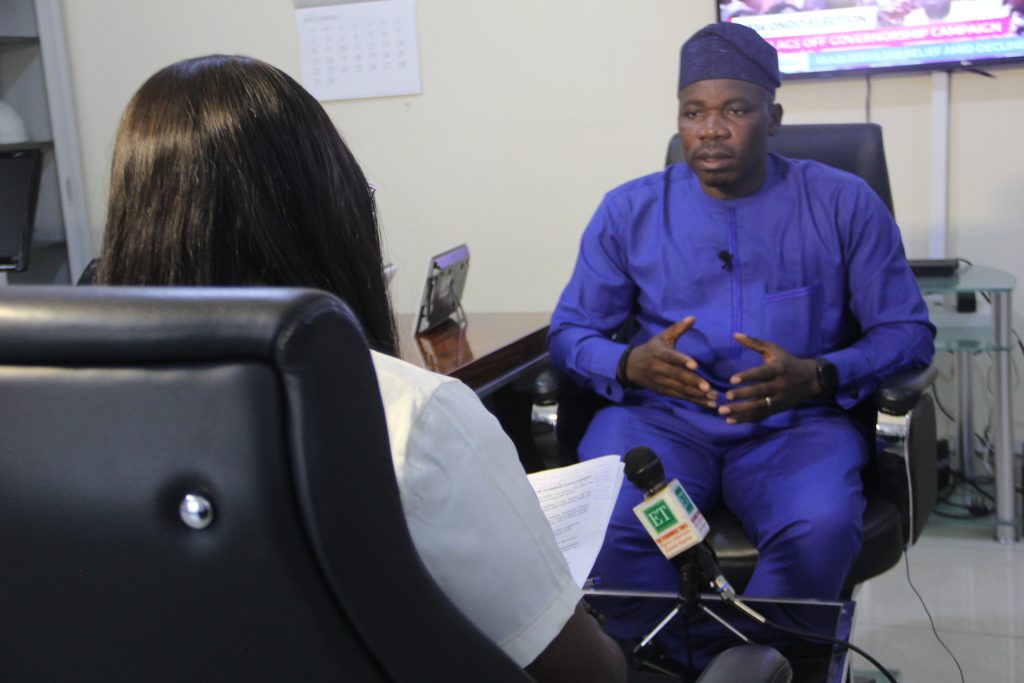
One of your key goals is to transition Nigeria’s auto industry from semi-knockeddown to completely knockeddown production in the near future. How soon can we expect this shift and what steps have you taken so far to achieve this?
Certainly. Our approach is gradual, progressing from semi-knockdown (SKD) to complete knockdown assembly. This transition reflects a developmental process similar to how a child learns to walk—starting with crawling, then standing, and finally walking. Initially, we bring in all the necessary kits and assemble them in Nigeria. This allows us to gain valuable knowledge and experience in the assembly process. From there, we can identify specific components that we can manufacture locally. For instance, we’ve recognized a number of plastic components that can be produced within Nigeria. To advance this initiative, we plan to hold meetings with key stakeholders from both the public and private sectors. Collaboration is essential; we need input from various entities, including the Ministry of Finance, our own ministry, the Federal Inland Revenue Service (FIRS), and customs authorities. Engaging all relevant stakeholders is crucial for understanding the implications of the policies we intend to implement. As we identify potential areas for local production, we will discuss their implications and outline the necessary steps for policy formulation, particularly regarding our deletion policies. However, it’s important that all stakeholders are in agreement before we proceed with the deletion process.
Are there any policies or incentives that are in place to encourage local manufacturers and investors to participate more actively in CKG production?
There are numerous incentives aimed at fostering local production. The first is fiscal incentives, particularly through differential tariffs that encourage domestic manufacturing. We aim to expand these initiatives, which is why we’ve identified additional areas for development. The key difference between semi-knockdown (SKD) and complete knockdown (CKD) assembly lies in the number of local components incorporated into the production process. It’s not just about bringing in parts; a significant portion must be sourced locally. For instance, we need to produce steel, plastic, batteries, tires, glass, upholstery, leather, fabric, and foam—all essential elements in vehicle assembly. Each of these components contributes to our ability to move towards CKD production. The incentives include a structured tariff system that differentiates between SKD and CKD imports. This means that importing CKD components will attract different tariffs compared to SKD, which is a substantial motivation for manufacturers. Additionally, the government is supporting the local assembly of vehicles, as mentioned by the President regarding the CNG initiative. Manufacturers that assemble in Nigeria will benefit from government patronage, creating a strong incentive for investment in local assembly. Overall, we have a comprehensive range of incentives designed to attract and support investments in Nigeria’s automotive sector.
So in discussing the encouragement and support of the original equipment manufacturers, OEM, after-sales markets, which is a major industry, could you explain what the after-sales market entails for those who may not really be familiar with the term? Additionally, what are your plans to improve this sector?
The after-sales market refers to the ongoing services and parts needed to keep vehicles running smoothly after their initial sale. This includes regular maintenance items like brake pads, oil filters, spark plugs, and engine oil, as well as lubricants and other essential components. In Nigeria, the after-sales market is substantial. For instance, vehicles like tricycles require tires that need to be replaced periodically, often every year, or even every three to four months for transporters. These regular maintenance parts are crucial for vehicle operation and safety. It’s also important for assemblers to establish fitting workshops for post-sale support. Just like a person can experience minor health issues, vehicles can develop minor faults that need immediate attention. Providing accessible after-sales care is essential. Currently, a significant amount of money is spent on importing parts for the after-sales market. Our goal is to encourage local production of these components to reduce reliance on imports. By focusing on enhancing our after-sales capabilities within Nigeria, we can not only improve service quality but also save substantial funds that can be reinvested in our economy.
So how is NADDC addressing consumer concerns, especially regarding access to these quality spare parts and after-sales services for locally produced or assembled vehicles?
When I assumed office, my first priority was to engage with local assemblers about improving after-sales service. We emphasized the importance of establishing care centers. For example, if vehicles are being sold in Abuja, it’s essential to have workshops in that area to address any issues that may arise. We’ve made it mandatory for all assemblers to set up workshops in major cities across Nigeria. Additionally, we discussed the need for assemblers to ensure the availability of high-demand parts. We want to avoid situations where customers have to wait months for essential components. We’ve addressed previous complaints about long wait times and have urged assemblers to stock frequently requested parts in major cities. For instance, if parts are available in Abuja and needed in Enugu, they should be delivered within 24 hours. Furthermore, we encourage individuals who experience issues with assemblers to reach out to us directly. Our compliance units are in place to follow up on any consumer complaints regarding services or products purchased from assemblers.
So you mentioned that the NADDC is developing a resource called the Nigerian Gas Vehicle Management System, which involves collaboration with various stakeholders, such as the SON, NADDC, and FRSC, Federal Road Safety corps. Could you provide more details on this initiative and its progress so far?
Yes, the Presidential CNG Initiative will host this platform, but all relevant agencies will contribute data and also utilize the information it provides. For example, the NADDC will supply information regarding workshops and conversion centers, while SON will detail the kits entering Nigeria. The Road Safety agency will gather information on the conversion centers that work on specific vehicles they observe on the road, as well as the types of kits being used. We have made significant progress on this initiative, and this week we will review and test run the platform before its final deployment. All stakeholders involved are collaborating to ensure we can launch as soon as possible.
How will this management system ensure compliance and set standards for those vehicles? And what are the projected timelines for its implementation?
This initiative will ensure strict adherence to compliance standards. For instance, when preparing for a conversion, the cylinder being selected must be registered in the system at the point of entry. By checking the number on the cylinder, I can verify its registration in the system. Additionally, all kits used must be certified and recorded in the system. Once I have the cylinder, I will input its details into our developed platform, along with the vehicle type and number, as well as the specifics of the kits being utilized. This comprehensive documentation will be accessible at the gas station, enabling verification. Furthermore, the Road Safety agency will monitor the roads to ensure that all necessary procedures have been properly followed.
How well equipped are we for the production of local autospare parts? And are there accessible funds that are available for organizations involved in this production to facilitate the swift implementation of the projects?
A single vehicle can have as many as 3,000 spare parts, but we don’t need to develop all of them. Instead, our focus is on identifying the essential parts that require attention. We are collaborating with investors to connect them with funding sources for production. We have pinpointed local manufacturers and are actively encouraging consumers to support these businesses. For instance, we have local producers of high-quality brake pads and oil filters, with one company based in Lagos and another in Uyo. In Kano, we have manufacturers producing leather upholstery and various fabrics, all crafted locally. Regarding funding, we have established partnerships with the Bank of Industry to help finance our stakeholders. As we are not a financial institution, we cannot provide direct funding ourselves. However, we guide our partners to the right financial institutions and assist them in structuring their requests effectively.
So given the critical role of spare parts in sustaining the automotive industry, are there ongoing research and development efforts to boost local innovation in this space?
We are actively engaged in research and development to enhance local innovation, which is why we have dedicated Research and Development departments. We’ve initiated a project in Kano to produce brake pads and are currently assessing its outcomes. Our research efforts also involve collaborations with various universities and individual innovators. For example, we are partnering with an entrepreneur from Plateau State to explore vehicle production and parts manufacturing, as well as working with another partner in the southwest on tricycle development. As for upcoming initiatives from NADDC, we consistently strive to enhance the production of locally manufactured vehicles and component parts. Additionally, we are developing an end-of-life vehicle program. This initiative aims to address the issue of abandoned vehicles left at mechanic workshops, which often go to waste. We want to transform this waste into wealth through our end-of-life program. These efforts are all part of our commitment to fostering a robust automotive ecosystem that benefits all Nigerians and promotes growth in the sector.
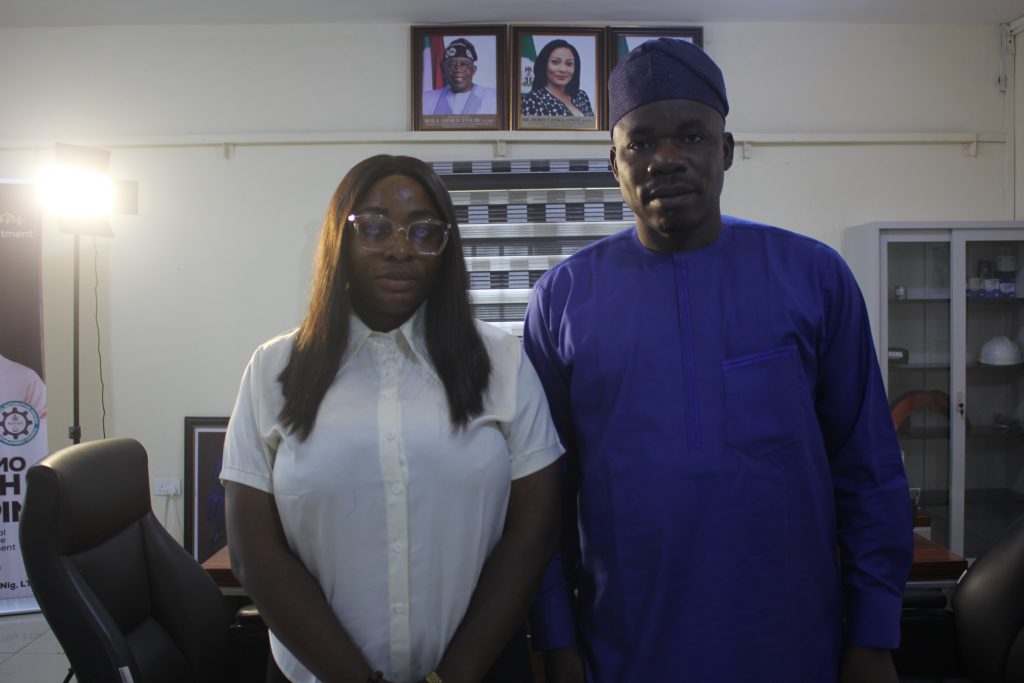
Thank you very much for your time sir.
Thank you for having me on this program.


